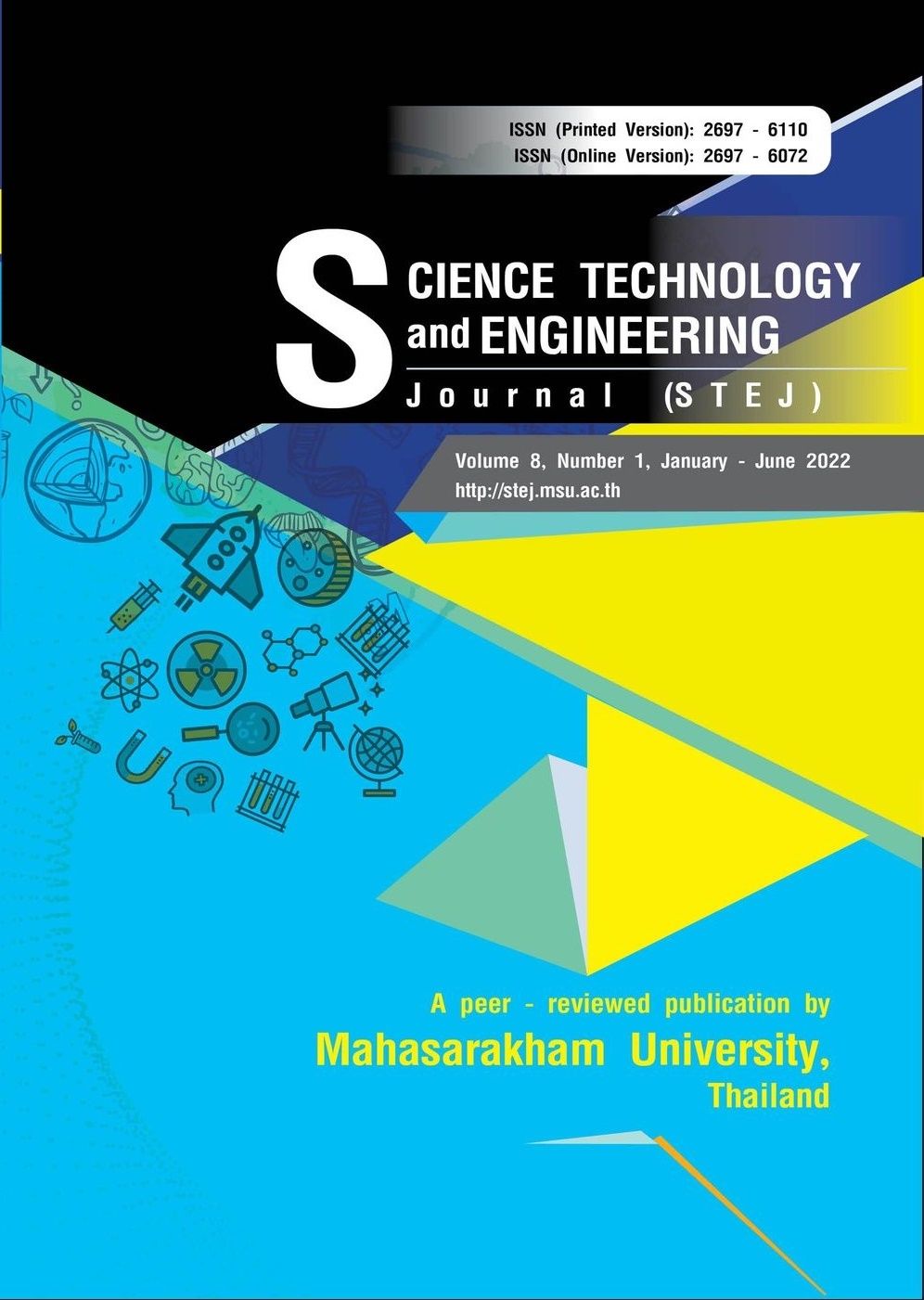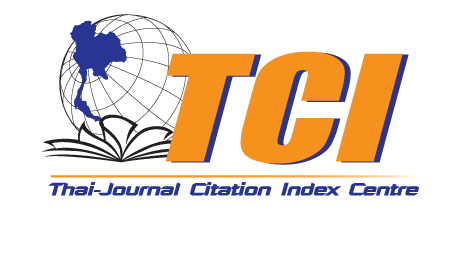Tangerine wine fermentation and acceptability of formulated wine
Keywords:
Fruit wine , formulation , Sai Nam Phueng , tangerine juiceAbstract
This research studied on fermentation of wine from Sai Nam Phueng tangerine (Citrus x aurantium L.) juice and evaluated the acceptability of tangerine wine formulations. The experiment with100% juice chaptalized (25% reducing sugar) fermented under 30°C by single and mixed cultures (Saccharomyces cerevisiae and Saccharomyces bayanus). The fermentation profiles of were investigated until alcohol reached 12%. Based on fermentation profile, single S. bayanus performed the fastest fermentation rate. Next, wine fermentation using S. bayanus was studied by varying reducing sugar of the must (16-25% reducing sugar). Results showed basic wine made from 22% reducing sugar must (contained 1.93% sugar, 11% alcohol, and 0.38% titratable acidity) was selected for further formulation. The basic wine was formulated by adjusting sugar content (2%, 4%, and 6%) and acidity (0.5%, 0.7%, and 0.9%). The acceptability of the 9 tangerine wine formulations was evaluated by fruit wine consumers (54 females and 54 males). Different acceptability of formulated wines was found between female and male assessors. In female assessors, 5 out of 9 wine formulars were significantly accepted (p≤0.05) with the liking score higher than 6 (form 9-point hedonic scale), as both sugar content and acidity were driving factors affecting the liking of flavor and overall liking. The most accepted formula was the wine contained 6%sugar and 0.5%acidity (7.13±1.33). Although the acidity was the key factor that played role the liking scores in male assessors, all formulated tangerine wines were significantly (p≤0.05) unaccepted (the liking score lower than 6).
References
A.O.A.C. (1995). Official methods of analysis (16th ed.). Association of Official Analytical Chemists.
Chanprasartsuk, O. & Prakitchaiwattana, C. (2015). Impacts of allochthonous and autochthonous yeast starters: case studies in fruit wine fermentations. In E. Perkins (Ed.), Food Microbiology Fundamentals, Challenges and Health Implications (pp. 117-160) Nova Publisher, Inc.
Ciani, M., Beco, L., & Comitini, F. (2006). Fermentation behaviour and metabolic interactions of multistarter wine yeast fermentations. International Journal of Food Microbiology, 108, 239-245. https://doi.org/10.1016/j.ijfoodmicro.2005.11.012
Clemente-Jimenez, J.M., MingoranceCazorla, L., Martínez-Rodríguez, S., Heras-Vázquez, F.J.L., & Rodríguez-Vico, F. (2004). Molecular characterization and oenological properties of wine yeasts isolated during spontaneous fermentation of six varieties of grape must. Journal of Food Microbiology, 21, 149-155. https://doi.org/10.1016/ S0740-0020(03)00063-7.
Jackson, R.S. (2020). Wine science: principles, practice, perception (5th ed.). Academic Press. Jutajumpol, A. & Panumastrakul, W. (1993). Orange wine, senior project report. Department of Food Technology, Chulalongkorn University. Kimball, D.A. 1999. Citrus processing: a complete guide (2nd ed). Aspen Publishers, Inc.
Lea, A., & Piggott, J. (2003). Fermented beverage production (2nd ed.) Blackie Academic & Professional. ISBN: 0306472759.
Ribéreau-Gayon, P., Dubourdieu, D., Doneche, B., & Lonvaud A. (2006). Handbook of enology: the microbiology of wine and vinifications. John Wiley & Sons.
Romano, P., Fiore, C., Paraggio, M., Caruso, M., & Capece, A. (2003). Function of yeast species and strains in wine flavor. International Journal of Food Microbiology, 86, 169-180. https://doi.org/10.1016/ S0168-1605(03)00290-3
Selli, S., Cabaroglu, T., & Canbas, A. (2003). Flavour components of orange wine made from a Turkish cv. Kozan. International Journal of Food Science and Technology, 38, 587-593. https://doi.org/10.1046/ j.1365-2621.2003.00691.x
Selli, S. (2007). Volatile constituents of orange wine obtained from Moro oranges (Citrus sinensis [L.] Osbeck). Journal of Food Quality, 30, 330-341. https://doi.org 10.1111/j.1745-4557.2007.00124.x
Soufleros, E.H., Pissa, I., Petridis, D., Lygerakis, M., Mermelas, K., Boukouvalas, G., & Tsimitakis, E. (2001). Instrumental analysis of volatile and other compounds of Greek kiwi wine; sensory evaluation and optimisation of its composition. Food Chemistry, 75, 487-500. https://doi.org/10.1016/ S0308-8146(01)00207-2
Downloads
Published
How to Cite
Issue
Section
License
Copyright (c) 2022 Science Technology and Engineering Journal (STEJ)

This work is licensed under a Creative Commons Attribution-NoDerivatives 4.0 International License.






